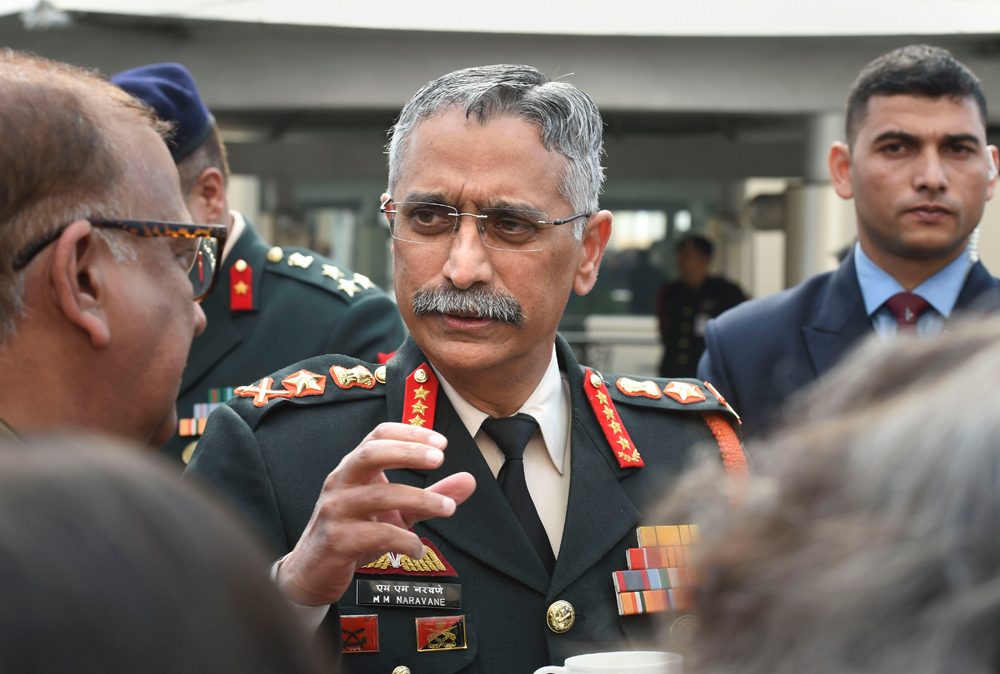Army chief Gen M.M. Naravane will pay a two-day visit to Ladakh from Tuesday to discuss with ground commanders the six-week standoff with Chinese military and review India's overall military preparedness in the mountainous region, Army sources said.
Tension between India and China escalated significantly in the region after 20 Indian Army personnel were killed by China's People's Liberation Army (PLA) in a violent clash in Galwan Valley on June 15 that New Delhi termed as a "premeditated and planned action" by the Chinese troops.
The sources said the Chief of the Army Staff will visit forward locations and interact with troops on the ground.
Last week, Air Chief Marshal R.K.S. Bhadauria made a quiet visit to Ladakh and Srinagar air bases to review the Indian Air Force's preparedness to deal with any eventualities in the region.
Gen Naravane will leave for Leh soon after attending the final session of a two-day conference of top Army commanders. The commanders extensively deliberated on the situation in eastern Ladakh on the opening day of the conference on Monday.
In Leh, Gen Naravane will hold talks with Lt Gen Harinder Singh, the commander of the 14 Corps that takes care of the sensitive border with China.
On Monday, Lt Gen Singh held a nearly 11-hour meeting with Commander of the Tibet Military District Maj Gen Liu Lin in an attempt to lower the temperature between the two sides.
In the meeting, the Indian delegation strongly raised with China the "premeditated" assault by Chinese troops on Indian soldiers in Galwan Valley and demanded immediate withdrawal of Chinese troops from all friction points in eastern Ladakh, people familiar with the development said.
The focus of the deliberations was on finalising modalities for disengagement of troops from various areas including Pangong Tso where the two militaries are on a bitter standoff for six weeks.
The first round of the Lt Gen-level talks were held on June 6 during which both sides finalised an agreement to disengage gradually from all standoff points beginning with Galwan Valley.
However, the situation along the border deteriorated following the Galwan Valley clashes as the two sides significantly bolstered their deployments in most areas along the 3,500-km de facto border.
On Sunday, the government has given the armed forces "full freedom" to give a "befitting" response to any Chinese misadventure along the LAC.
The Army has already sent thousands of additional troops to forward locations along the border in the last one week. The IAF has also moved a sizeable number of its frontline Sukhoi 30 MKI, Jaguar, Mirage 2000 aircraft and Apache attack helicopters to several key air bases including Leh and Srinagar following the clashes.
The two armies were engaged in a standoff in Galwan and several other areas of eastern Ladakh since May 5 when their troops clashed on the banks of the Pangong Tso.
The situation in eastern Ladakh deteriorated after around 250 Chinese and Indian soldiers were engaged in a violent face-off on May 5 and 6. The incident in Pangong Tso was followed by a similar incident in north Sikkim on May 9.
Prior to the clashes, both sides had been asserting that pending the final resolution of the boundary issue, it was necessary to maintain peace and tranquillity in the border areas.










